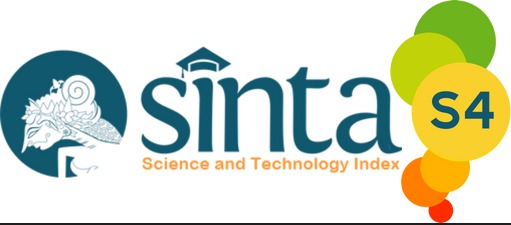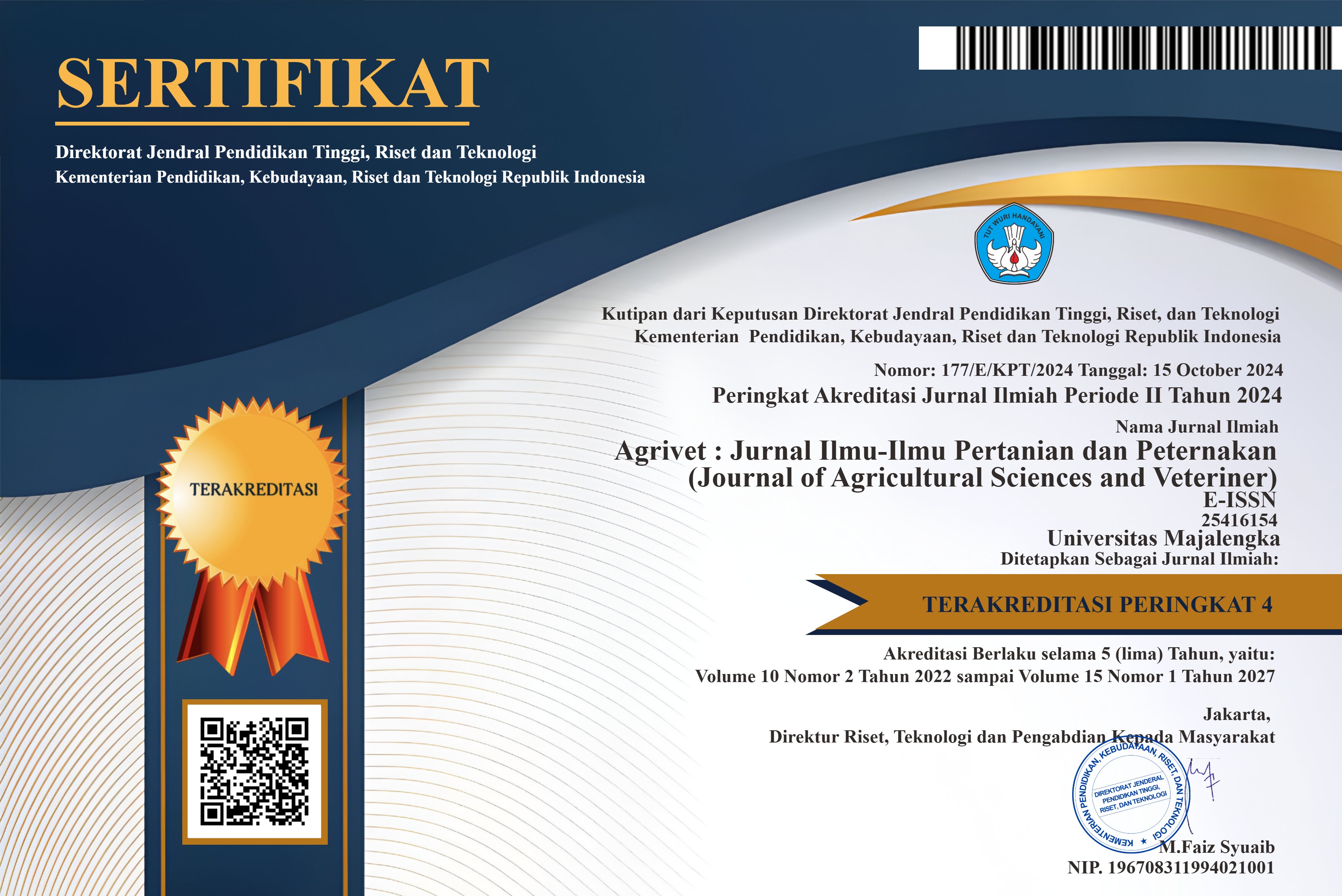Pertumbuhan vegetatif dan generative tanaman lidah buaya (aloe vera L.) varietas chinensis pada pasir pantai
DOI:
https://doi.org/10.31949/agrivet.v13i1.13127Abstract
Aloe vera (Aloe vera L.) is a plant belonging to the Liliaceae family, characterized by thick, fleshy leaves that are long, tapering at the tips, green in color, and contain a mucilaginous gel. Aloe vera cultivation can be conducted in coastal sandy soil. However, one of the major challenges of coastal sandy soil is abiotic stress caused by salinity. The propagation source significantly influences both generative and vegetative growth of the plant. This study aims to determine the optimal combination of propagation source and salinity stress for improving the generative and vegetative growth of Aloe vera in coastal sandy soil. The research was conducted in Tegalretno Village, Petanahan District, Kebumen Regency, Central Java, Indonesia. Cultivation took place inside a greenhouse measuring 21m x 10m. The plants were grown in 40 cm polybags, with a 50 cm spacing between each plant. A total of 252 plants were used in the study. The experiment followed a factorial Completely Randomized Design (CRD) with two factors. Data were analyzed using SPSS at a 5% significance level. The results demonstrated that the interaction between propagation source and salinity levels in coastal sandy soil significantly influenced both vegetative and generative growth of Aloe vera. The best vegetative growth was observed in the combination of propagation source from Gunung Kidul with an additional 10 g/L salinity (A1C2), producing an average plant height of 67.125 cm. Meanwhile, the highest number of shoots (3.69 shoots per week) was obtained in the combination of propagation source from Cilacap with an additional 10 g/L salinity (A3C2).
Keyword : Lidah buaya, pasir pantai
Keywords:
Aloe vera, coastal sandy soil, growthDownloads
References
Aprilia, R. L., Purwanto, E., Suryanti, V., & Rahayu, M. (2025). Impact of salinity stress on the response of aloe vera from different breeders on coastal sand land. 01023.
Aprilia, R. L., & Sukur, S. (2022). Kajian Sifat Fisik, Kimia, Dan Biologi Pada Tanah Berpasir Di Beberapa Wilayah Indonesia. Agronu: Jurnal Agroteknologi, 1(02), 71–79. https://doi.org/10.53863/agronu.v1i02.475
Fathurrahman, F., Rivaldo, A., Studi, P., Fakultas, A., Universitas, P., Riau, I., & Author, C. (2023). Respon Pertumbuhan Lidah Buaya di Media Gambut Pada Konsentrasi Pupuk Embio dan Dosis Kompos Jagung. Jurnal Agrotek Tropika, 11(3), 521–529.
Latuharhary, R. A., & Saputro, T. B. (2017). Respon Morfologi Tanaman Jagung (Zea mays) Varietas Bisma dan Srikandi Kuning pada Kondisi Cekaman Salinitas Tinggi. Jurnal Sains Dan Seni ITS, 6(2), 2–6. https://doi.org/10.12962/j23373520.v6i2.25194
Melliawati, R. (2018). Potensi Tanaman Lidah Buaya (Aloe pubescens) dan Keunikan Kapang Endofit yang Berasal dari Jaringannya. BioTrends, 9(1), 1–6.
Savitri, D. A., Nadzirah, R., & Novijanto, N. (2022). Pengenalan Bertanam Lidah Buaya Untuk Anak-Anak Di Jember. SELAPARANG: Jurnal Pengabdian Masyarakat Berkemajuan, 6(1), 219. https://doi.org/10.31764/jpmb.v6i1.7207
Syahputra, R., Darini, & Darnawi. (2017). Efek Dosis Pupuk Kandang dan Sumber Nitrogen Terhadap Pertumbuhan Bibit Tanaman Lidah Buaya (Aloe vera L.) di Lahan Pasir. Journal Universitas Sarjanawiyata Tamansiswa.
Utami, A., & Aprilia, L. (2025). Respon Produksi dan Fisiologi Lidah Buaya ( Aloe Vera L .) Varietas Chinensis pada Cekaman Salinitas Lahan Berpasir Production and Phisiological Response of Aloe Vera ( Aloe Vera L .) Chinensis Variety on Salinity Stres of Sandy Land. 13(1), 48–54.
Widayani, K., Puspita, M. eka, Tampubolon, E. S., & Nurida, N. (2022). Pelatihan Budidaya Lidah Buaya Di Kelurahan Paku Jaya Serpong Utara. Jurnal Abdi Insani, 9(1), 134–139. https://doi.org/10.29303/abdiinsani.v9i1.485
Published
How to Cite
Issue
Section
License
Copyright (c) 2025 Ihza Nurrudin Yahya, Renannti Lunnadiyah Aprilia

This work is licensed under a Creative Commons Attribution-ShareAlike 4.0 International License.
An author who publishes in the Jurnal Agrivet agrees to the following terms:
- Author retains the copyright and grants the journal the right of first publication of the work simultaneously licensed under the Creative Commons Attribution-ShareAlike 4.0 License that allows others to share the work with an acknowledgment of the work's authorship and initial publication in this journal
- The author is able to enter into separate, additional contractual arrangements for the non-exclusive distribution of the journal's published version of the work (e.g., post it to an institutional repository or publish it in a book) with the acknowledgment of its initial publication in this journal.
- The author is permitted and encouraged to post his/her work online (e.g., in institutional repositories or on their website) prior to and during the submission process, as it can lead to productive exchanges, as well as earlier and greater citation of the published work












